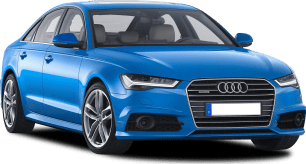The Genesis G80 3.5T AWD SL drives in a similar way to the big brutish American-inspired Caprice and HSV Grange V8s, in that it delivers effortless, lazy performance with a sophisticated twist.
No slouch off the line even in Eco mode, the twin-turbo V6 leaps into action if you’re heavy on the throttle in Comfort mode, hunkering down as the speed piles on quickly.
With 'Launch Control', the claimed 0-100km/h sprint time is 4.9 seconds, though in regular mode it is rated at 5.1s on the way to a top speed of 250km/h.
And while the enhanced exhaust orchestrates a nice warble from behind, it remains a strong, smooth and silent performer.
The AWD system is RWD-biased and is continuously variable according to prevailing conditions, performance and grip.
The SL also features an electronic limited-slip differential for better traction and grip, as well as rear-wheel steering that either counter-steers the rear wheels in relation to the front ones for a tighter turning circle (11.8m) or parallel steers them for “enhanced steering responsiveness and stability at high speed.”
Selecting 'Sport' or 'Sport+' is met with distinctly more-urgent responses, with the transmission holding on to ratios as the revs approach the red line, which can be annoying around town.
It’s quite surprising – and probably a good thing – that the beautifully balanced and connected steering can be light and easy when you’re relaxed, and yet hefty to the point of feeling heavy when you’re really on it. Likewise, the brakes in 'Comfort' are pleasantly progressive. In 'Brake Sport' they’re fiercely responsive.
Note that, in Sport+ with the safeties off, the SL's tail can become very playful indeed, even in bone-dry conditions.
Suspension is via multi-links at both ends of the car, whilst the SL grade includes what Genesis calls “Road Preview Electronic Control Suspension (ECS)”, that scans the road ahead and then adjusts the adaptive dampers for better ride comfort.
That all said, the Genesis’ sheer size and weight keep it from feeling like an out-and-out sports sedan. The speed and AWD grip is there - tyres are Michelin Pilot Sport 4S (245/40 fr - 275/35 rr) - and the handling results in some pretty astounding agility for one so large, but the steering connection, balance and alacrity are more about confidence and competence than light-footed athleticism.
This is no cut-price BMW M5. But HSV Grange owners might recognise something in its muscular good manners.
And what of the SL’s four-wheel steering? It provides a degree of tuck-in at speed which can catch out the unaware driver, though of course, it is also a boon for round-town manoeuvrability. The tight turning circle that ensues is incredible for one so long.
Ultimately, though, it is a large and heavy sedan that never quite stops feeling that way. It won’t shrink around you despite being an easy and rewarding car to drive.
Out in the wet, the AWD contributes to the G80’s squatted-down attitude, feeling impervious to prevailing external conditions.
But it’s also not quite the sumptuous luxury liner that, say, a Mercedes S450 is.
Very civilised on smooth roads, with a decent level of absorption from the multi-link suspension, the G80 struggles a little with smaller-frequency bumps at times, but then does a great job smothering the larger ones. It is certainly within the luxury sedan expectations for refinement, isolation and ride comfort, but just not the best.
If you stick with freeways and highways, this thing will bring years of civilised pleasure and punchy performance. It is a rapid yet relaxed grand touring family cruiser.






